In today’s competitive business environment, customer loyalty is crucial for long-term success. A well-designed and effective loyalty program can not only increase customer retention but also encourage repeat business and create brand advocates. To maximize the impact of your customer loyalty program and significantly improve your revenue, it’s important to implement strategies that resonate with your target audience, offer valuable rewards, and provide a seamless user experience. Maximizing your customer loyalty program can significantly improve your revenue by increasing customer retention, encouraging repeat business, and fostering customer advocacy. Here are ten strategies to help you maximize your loyalty program:
10 Steps To Maximizing Customer Loyalty Program To Improve Your Revenue
- Know your customers: Understand your target audience’s needs, preferences, and habits by conducting market research and customer profiling. This will help you tailor your loyalty program to their specific requirements.
- Offer a simple and user-friendly program: Make it easy for customers to join, participate, and redeem rewards. Ensure that the registration process is straightforward and that the program rules are clear and easy to understand.
- Provide relevant rewards: Offer rewards that are appealing, valuable, and in line with your customer’s interests. This can include discounts, exclusive access to products or services, or complimentary items.
- Leverage tiered rewards: Implement a tiered rewards system, offering greater rewards for higher levels of loyalty. This can incentivize customers to continue their patronage, increasing their lifetime value.
- Offer personalized experiences: Use customer data to personalize and customize your loyalty program. Offer tailored promotions, product recommendations, and communication based on your customer’s preferences and behaviors.
- Engage through multiple channels: Utilize various channels (email, mobile apps, social media, etc.) to communicate with customers, ensuring they are informed about the program and its benefits.
- Maintain consistent communication: Keep customers informed about their rewards status, special offers, and program updates. This can help build trust and maintain their interest in the program.
- Encourage social sharing and referrals: Offer incentives for customers who refer friends or share your program on social media. This can help spread the word about your loyalty program and attract new customers.
- Track and analyze program performance: Regularly monitor your loyalty program’s performance to identify areas for improvement. This can help you optimize the program to better serve your customers and maximize revenue.
- Continuously evolve the program: Keep your loyalty program fresh and relevant by regularly updating it based on customer feedback and industry trends. This can help you maintain customer interest and stay ahead of the competition.
By implementing these strategies, you can maximize the potential of your customer loyalty program, ultimately leading to increased customer satisfaction, retention, and revenue.
Know Your Customers
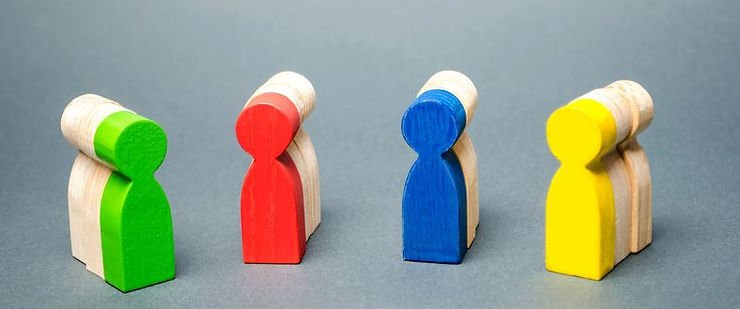
Knowing your customers is the foundation of a successful loyalty program. It is essential to understand your target audience’s needs, preferences, and habits to design a program that will appeal to them and foster long-term loyalty. Here is a more in-depth explanation of the process:
Conduct Market Research
Start by collecting data on your target audience’s demographics, including age, gender, income, location, and education. This information can help you identify trends and patterns in their behavior and preferences. You can gather this data through surveys, interviews, focus groups, and online analytics tools.
Analyze Customer Data
Evaluate your customers’ purchase history, browsing behavior, and engagement with your brand. This can help you determine their preferences in terms of products, services, and communication channels. Analyzing this data can also help you identify customer segments, which can be used to create targeted marketing campaigns and promotions.
Develop Customer Personas
Create detailed customer personas that represent different segments of your target audience. These personas should include information on their demographics, preferences, goals, and pain points. By developing these personas, you can better understand the motivations behind their behavior and tailor your loyalty program accordingly.
Solicit Customer Feedback
Actively seek feedback from your customers through surveys, reviews, and social media monitoring. This can help you understand their likes, dislikes, and expectations of your brand, allowing you to fine-tune your loyalty program to better cater to their needs.
Monitor Industry Trends
Keep an eye on industry trends and competitor offerings to stay current with customer expectations. Incorporate the latest trends into your loyalty program to ensure that it remains relevant and engaging.
Align The Program With Customer Values
Identify the core values that resonate with your target audiences, such as sustainability, convenience, or innovation, and incorporate them into your loyalty program. This can help create an emotional connection between your customers and your brand, increasing their loyalty.
Test And Iterate
Continuously test different aspects of your loyalty program, such as reward types, redemption options, and communication strategies, to determine what works best for your customers. Use the insights gathered from this testing to refine and improve your program over time.
By taking these steps to thoroughly understand your customers, you can create a loyalty program that truly resonates with them, increasing their satisfaction and driving long-term loyalty to your brand.
Offer A Simple And User Friendly Program

Offering a simple and user-friendly loyalty program is essential in attracting and retaining customers. A streamlined, intuitive experience can increase customer engagement and satisfaction. Here are some steps to ensure your program is easy to use:
Streamlined Registration Process
Make it quick and effortless for customers to join your loyalty program. Provide a simple sign-up form on your website, mobile app, or in-store that requests only necessary information. Minimize the number of steps and fields to fill out, making the process as frictionless as possible.
Clear Program Rules
Clearly outline the program’s terms and conditions, point-earning structure, reward tiers, and redemption process. Avoid using complex jargon or hidden clauses that might confuse customers. Make this information easily accessible on your website, app, or in-store materials.
Intuitive Interface
Design your loyalty program’s interface to be user-friendly and visually appealing. Use clear navigation, easy-to-read fonts, and concise messaging. Make it simple for customers to check their point balance, redeem rewards, and view available offers.
Seamless Integration
Integrate your loyalty program into existing platforms and customer touchpoints, such as your website, mobile app, and point-of-sale system. This will allow customers to effortlessly earn and redeem points during their regular interactions with your brand.
Flexible Earning Options
Offer multiple ways for customers to earn points, such as making purchases, writing reviews, or referring friends. Make it easy for customers to understand how to earn points and provide clear instructions on how to participate in these activities.
Straightforward Redemption Process
Simplify the reward redemption process by allowing customers to easily redeem their points for rewards, either online, in-app, or in-store. Provide clear instructions on how to redeem points and ensure the process is quick and hassle-free.
Responsive Customer Support
Offer dedicated customer support for your loyalty program to address any questions, issues, or concerns. Make it easy for customers to contact support via email, phone, or chat, and ensure they receive prompt and helpful assistance.
Regular Updates And Improvements
Continuously monitor your loyalty program’s performance and gather customer feedback to identify areas for improvement. Regularly update and refine your program to ensure it remains simple and user-friendly while adapting to the evolving needs of your customers.
By offering a simple and user-friendly loyalty program, you can increase customer satisfaction, engagement, and loyalty, ultimately driving more repeat business and improving your revenue.
Provide Relevant Rewards
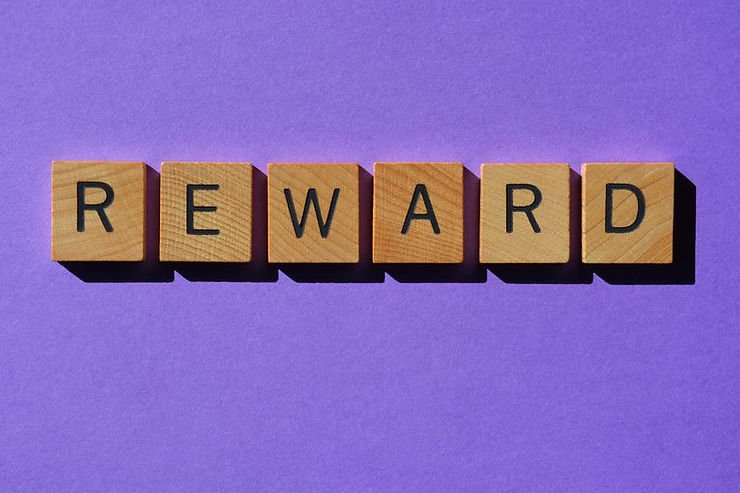
Providing relevant rewards is crucial to the success of your loyalty program, as it keeps customers engaged and motivates them to continue their patronage. By offering rewards that align with your customer’s interests and preferences, you can increase the perceived value of your program and encourage long-term loyalty. Here are some tips for offering relevant rewards:
Understand Customer Preferences
Use the customer data you’ve collected to identify the types of rewards that will most appeal to your target audience. This can include popular products, services, or experiences that your customers have shown a particular interest in.
Offer A Variety Of Rewards
Provide a diverse range of rewards to cater to different customer preferences and needs. This can include discounts, free items, gift cards, exclusive access to new products or services, and experiential rewards like special events or workshops.
Tailor Rewards To Customer Segments
Customize rewards based on customer segments, such as their purchase history, demographics, or membership tier. This personalization can help make the rewards more appealing and relevant to each customer.
Align Rewards With Your Brand
Ensure that the rewards offered align with your brand values and product offerings. This can help create a cohesive experience and reinforce your brand identity, making the rewards more meaningful and valuable to your customers.
Create A Sense Of Exclusivity
Offer exclusive rewards that are only available to loyalty program members, creating a sense of exclusivity and perceived value. This can encourage customers to join the program and maintain their engagement.
Update Rewards Regularly
Refresh your rewards offerings periodically to keep the program fresh and interesting for customers. This can help maintain their interest and encourage them to continue participating in the program.
Offer Limited-Time Promotions
Create limited-time offers or promotions, such as bonus points, double rewards, or special discounts, to generate excitement and encourage customers to take action. These time-sensitive incentives can also create a sense of urgency that can drive more immediate sales.
Communicate The Value Of Rewards
Communicate the value of your rewards to customers, highlighting the benefits they can receive by participating in your loyalty program. This can include showcasing the savings, exclusive experiences, or special access they can enjoy as program members.
By offering relevant rewards that are tailored to your customer’s interests and preferences, you can create a more engaging and valuable loyalty program, leading to increased customer loyalty and long-term revenue growth.
Leverage Tiered Rewards
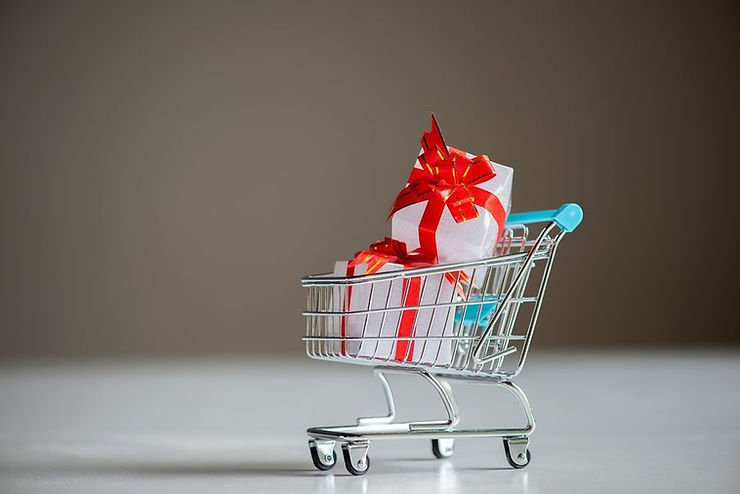
Leveraging a tiered rewards system is an effective strategy for incentivizing customers to continue their patronage and increase their lifetime value. By offering greater rewards at higher levels of loyalty, customers are encouraged to engage more frequently with your brand, leading to higher revenue. Here are some steps to implement a tiered rewards system:
Determine Reward Tiers
Establish multiple tiers in your loyalty program, each offering progressively better rewards and benefits. These tiers can be based on a point system, purchase frequency, or spending levels, depending on what best aligns with your business model and customer base.
Define Clear Milestones
Create clear and attainable milestones for customers to reach each tier. Ensure that the criteria for progressing to higher tiers are transparent and easy to understand.
Offer Tier-Specific Rewards
Provide exclusive rewards and benefits for each tier, with higher tiers offering more valuable and desirable rewards. These can include discounts, free items, priority access to new products, or special services like free shipping or priority customer support.
Recognize And Reward Loyalty
Acknowledge customers who reach higher tiers with personalized messages, certificates, or other tokens of appreciation. This recognition can make customers feel valued and encourage them to continue their loyalty to your brand.
Encourage Tier Progression
Motivate customers to strive for higher tiers by showcasing the additional benefits and rewards they can unlock by reaching the next level. This can be done through targeted marketing campaigns, in-app notifications, or personalized email communications.
Offer Tier Retention Incentives
Provide incentives for customers to maintain their current tier statuses, such as bonus points or exclusive promotions, to encourage continued engagement and spending.
Monitor And Adjust
Regularly analyze the performance of your tiered rewards system, paying attention to customer feedback and engagement metrics. Adjust the tier criteria or rewards as needed to optimize the program and ensure it remains relevant and appealing to your customers.
Communicate The Tiered System
Communicate the benefits and rewards associated with each tier to your customers. Ensure that they understand the advantages of progressing through the tiers and how to achieve these milestones.
By implementing a tiered rewards system, you can effectively incentivize customers to engage more frequently with your brand, leading to increased loyalty, higher spending, and ultimately, greater revenue.
Offer Personalized Experiences

Offering personalized experiences within your loyalty program can significantly enhance customer engagement and satisfaction. By using customer data to tailor promotions, product recommendations, and communication, you can create a more relevant and meaningful experience for your customers. Here are some strategies for offering personalized experiences:
Segment Your Customers
Use the customer data you have collected to segment your customers based on their demographics, preferences, and behaviors. This will enable you to create targeted promotions and communications that are more likely to resonate with each segment.
Personalized Promotions
Create tailored promotions and offers based on your customer’s purchase history, preferences, and engagement with your brand. This can include offering special discounts on frequently purchased items, suggesting complementary products, or providing exclusive deals based on customer preferences.
Customized Product Recommendations
Analyze customer data to determine the types of products and services that are most likely to appeal to individual customers. Offer personalized recommendations based on this analysis, either through email, in-app notifications, or on your website.
Tailored Communication
Customize your communication with customers based on their preferences, interests, and engagement with your brand. This can include sending personalized emails or messages with relevant content, offers, or updates that are likely to be of interest to each customer.
Adapt To Customer Behavior
Monitor customer behavior and engagement with your loyalty program to identify any changes in their preferences or needs. Adjust your personalized offers and communications accordingly to maintain their interest and relevance.
Celebrate Special Occasions
Use customer data to recognize important milestones or occasions in your customers’ lives, such as birthdays, anniversaries, or other significant events. Offer personalized rewards, discounts, or messages to celebrate these moments and make your customers feel valued.
Leverage Customer Feedback
Actively seek and incorporate customer feedback into your personalization efforts. This can help you better understand your customers’ needs and preferences, enabling you to offer more relevant and appealing personalized experiences.
Utilize Technology
Make use of marketing automation tools, customer relationship management (CRM) systems, and other technologies to help you analyze customer data, create personalized offers, and deliver targeted communication. This can help you streamline your personalization efforts and improve their effectiveness.
By offering personalized experiences within your loyalty program, you can create a more relevant and engaging experience for your customers, which can lead to increased satisfaction, loyalty, and revenue.
Engage Through Multiple Channels

Engaging customers through multiple channels is crucial for keeping them informed about your loyalty program and its benefits. By utilizing various communication channels, you can reach your customers where they are most active and provide a seamless experience across all touchpoints. Here are some strategies for engaging customers through multiple channels:
Email Marketing
Send regular email updates to your customers with information about the loyalty program, personalized offers, promotions, and reward redemption opportunities. Make sure your emails are visually appealing, mobile-friendly, and contain clear customers call to action.
Mobile Apps
If your business has a mobile app, integrate your loyalty program into the app to provide a seamless experience for your customers. Use in-app notifications to communicate new offers, promotions, or updates, and make it easy for customers to view their point balance and redeem rewards.
Social Media
Leverage your social media platforms to promote your loyalty program and engage with your customers. Share updates, exclusive offers, and promotions, and encourage customers to share their experiences with your brand. Respond to comments and messages to foster a sense of community and show that you value customer feedback.
Website Integration
Incorporate your loyalty program prominently on your website, making it easy for customers to sign up, check their point balance, and redeem rewards. Use banners, pop-ups, or dedicated landing pages to promote the program and its benefits.
SMS Marketing
Utilize SMS marketing to send targeted, personalized messages to your customers with updates on their point balance, new offers, or promotions. Ensure that you have customers’ consent before sending SMS messages and adhere to any relevant regulations.
In-Store Engagement
If you have physical stores, ensure that your loyalty program is well-integrated into the in-store experience. Train your staff to promote the program and assist customers with signing up or redeeming rewards. Use in-store signage, displays, or tablets to provide information about the program and its benefits.
Push Notifications
Use push notifications to send timely, relevant updates about your loyalty program to your customers. This can include information about new promotions, limited-time offers, or reward redemption opportunities. Make sure to strike a balance between engaging and not overwhelming your customers with too many notifications.
Omnichannel Consistency
Maintain consistency in your messaging, branding, and offers across all channels to provide a seamless experience for your customers. Ensure that your loyalty program is easily accessible and user-friendly, regardless of the channel through which customers interact with your brand.
By engaging customers through multiple channels, you can effectively communicate the benefits of your loyalty program and increase customer awareness, participation, and loyalty, ultimately driving revenue growth.
Maintain Consistent Communication
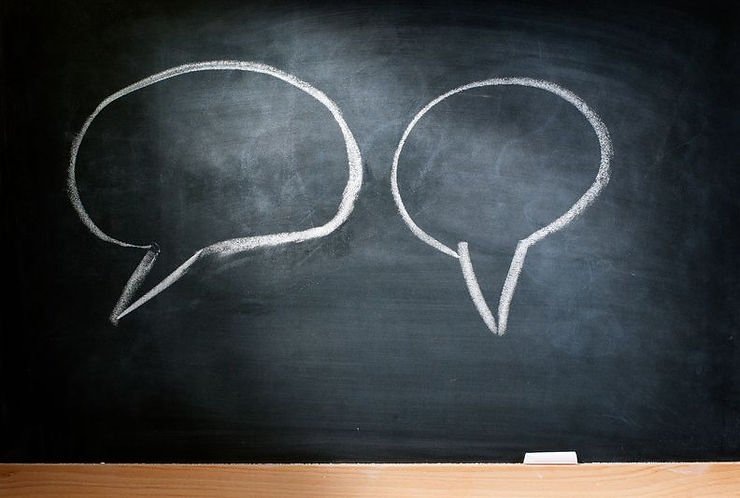
Maintaining consistent communication with your customers is essential for building trust and keeping their interest in your loyalty program. By regularly updating them on their rewards status, special offers, and program updates, you demonstrate your commitment to their satisfaction and encourage ongoing engagement. Here are some strategies to maintain consistent communication:
Regular Updates
Send regular email or SMS updates to your customers about their rewards status, including their point balance, progress towards the next tier, or upcoming reward expiration dates. This helps keep customers informed and motivated to continue participating in the program.
Personalized Offers
Share personalized offers, promotions, or discounts based on your customer’s preferences, interests, and purchase history. This can make your communication more relevant and engaging, increasing the likelihood that customers will take advantage of these offers.
New Program Features
Notify customers about any updates or improvements to your loyalty program, such as new reward options, additional earning opportunities, or enhanced redemption processes. This can help maintain their interest and showcase your commitment to continuously improving the program.
Special Events Or Promotions
Inform customers about any special events, limited-time promotions, or exclusive offers related to the loyalty program. This can create excitement and encourage customers to engage with your brand during these promotional periods.
Content Marketing
Share valuable content related to your industry, products, or services, such as blog posts, articles, or videos. This can help establish your brand as a thought leader and keep your customers engaged with your brand beyond the loyalty program.
Celebrate Milestones
Recognize and celebrate customer milestones, such as reaching a new reward tier or the anniversary of joining the program. This can help strengthen the relationship between your brand and your customers, making them feel valued and appreciated.
Customer Feedback
Solicit and respond to customer feedback, addressing any concerns or questions they may have about the loyalty program. This open dialogue can help build trust and demonstrate your commitment to customer satisfaction.
Channel Optimization
Tailor your communication to the specific channel through which you are engaging your customers. For example, use concise, mobile-friendly messaging for SMS or push notifications, while leveraging the visual capabilities of email or social media to showcase offers and promotions.
By maintaining consistent communication with your customers, you can build trust, foster long-term loyalty, and ensure that they remain engaged with your loyalty program, ultimately driving increased revenue and customer lifetime value.
Encourage Social Sharing And Referrals
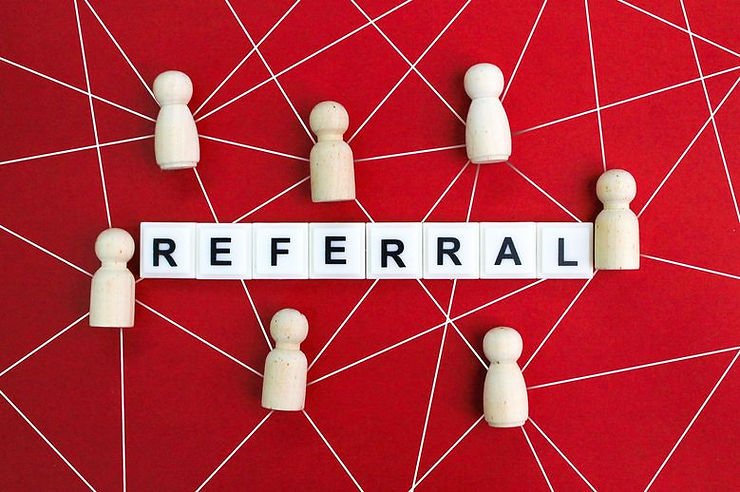
Encouraging social sharing and referrals can be a powerful way to spread the word about your loyalty program and attract new customers. By offering incentives to customers who refer friends or share your program on social media, you can leverage their networks and drive organic growth. Here are some strategies to encourage social sharing and referrals:
Referral Rewards
Offer rewards or incentives to customers who successfully refer friends or family members to your loyalty program. This can include bonus points, discounts, or free products or services for both the referrer and the new customer.
Social Sharing Incentives
Provide incentives for customers who share your loyalty program or promotions on social media platforms. This can include offering bonus points or exclusive offers for customers who share a specific post, tag your brand, or use a designated hashtag.
Simplify Referrals
Make it easy for customers to refer friends and share your program on social media by providing simple tools and clear instructions. This can include adding referral links, share buttons, or social media widgets to your website or mobile app.
Personalized Referral Codes
Provide customers with unique referral codes or links that they can share with friends and family. This makes it easy to track and reward successful referrals and gives customers a sense of ownership in the referral process.
Promote Referral Opportunities
Regularly remind customers of referral rewards and social sharing incentives through email, SMS, social media, or in-app notifications. Make sure to highlight the benefits and value of participating in these activities.
Showcase Success Stories
Share customer success stories or testimonials on your website or social media platforms, showcasing the positive experiences of customers who have referred friends or engaged with your loyalty program. This can help build social proof and encourage others to participate.
Monitor And Optimize
Track the performance of your referral and social sharing initiatives, including the number of referrals, social media shares, and new customer acquisitions. Use this data to optimize your incentives and messaging, ensuring that your strategies remain effective and appealing to your customers.
By encouraging social sharing and referrals, you can tap into your customers’ networks to promote your loyalty program, attract new customers, and ultimately drive growth for your business.
Track And Analyze Program Performance

Tracking and analyzing the performance of your loyalty program is essential for identifying areas for improvement and optimizing the program to better serve your customers and maximize revenue. Here are some steps to track and analyze your loyalty program’s performance:
Establish Key Performance Indicators (KPIs)
Identify the KPIs that are most relevant to your loyalty programs, such as customer acquisition, retention, lifetime value, average order value, redemption rate, or referral rate. These metrics will help you assess the effectiveness of your program and guide your optimization efforts.
Collect And Analyze Data
Gather data on your loyalty program’s performance, including customer engagement, reward redemptions, referral activity, and revenue growth. Use analytical tools to track these metrics over time and identify trends or patterns.
Segment Analysis
Break down your data by customer segments to gain a deeper understanding of how different groups of customers are engaging with your loyalty program. This can help you identify areas for improvement and tailor your strategies to better serve each segment.
Compare To Benchmarks
Compare your loyalty program’s performance to industry benchmarks or competitor programs. This can help you identify areas where your program may be underperforming and provide insight into potential opportunities for improvement.
Test And Optimize
Use the insights gained from your data analysis to make adjustments to your loyalty program. This can include updating your rewards structure, refining your communication strategy, or improving the user experience. Continuously test and iterate on these changes to find the most effective strategy for your program.
Monitor customer feedback
Regularly solicit and review customer feedback to gain insights into their experiences with your loyalty program. Address any concerns or issues and use their feedback to improve and refine your program.
Track ROI
Calculate the return on investment (ROI) of your loyalty program by comparing the costs associated with running the program to the revenue generated from increased customer loyalty, retention, and referrals. This can help you assess the overall effectiveness of your program and guide your future investment decisions.
Adjust Goals And Objectives
As you analyze your program’s performance, you may need to adjust your initial goals and objectives to better align with the insights gained from your data. This can help ensure that your program remains focused on driving the desired outcomes for your business.
By regularly tracking and analyzing the performance of your loyalty program, you can identify areas for improvement, optimize your strategies, and ensure that your program continues to deliver value to your customers and your business.
Continuously Evolve The Program
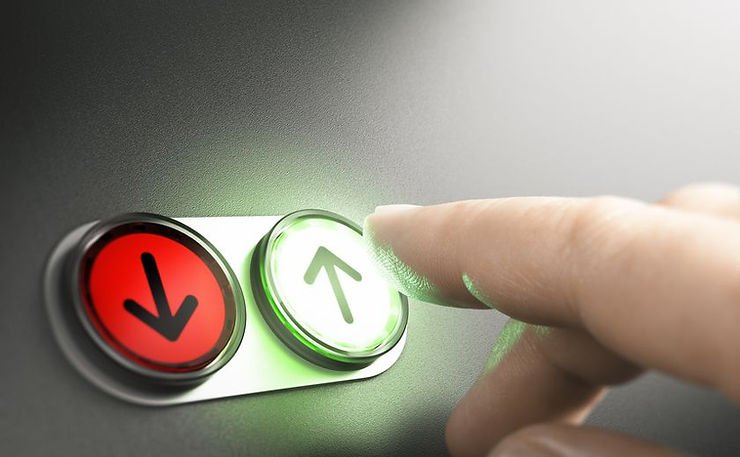
Continuously evolving your loyalty program is essential for keeping it fresh, relevant, and appealing to your customers. Regularly updating your program based on customer feedback and industry trends can help maintain customer interest and ensure that your program stays competitive. Here are some strategies for continuously evolving your loyalty program:
Monitor Industry Trends
Keep an eye on loyalty program trends, new technologies, and best practices in your industry. By staying informed, you can identify opportunities to innovate and update your program to better meet customer expectations and stay ahead of the competition.
Solicit Customer Feedback
Regularly collect feedback from your customers through surveys, focus groups, or social media channels. Use this feedback to identify areas for improvement, address any concerns or issues, and make adjustments to your program based on customer preferences and needs.
Experiment With New Features
Test and implement new features or enhancements to your loyalty program, such as new reward options, personalized offers, or gamification elements. Monitor the performance of these new features and refine them based on customer feedback and engagement.
Adapt To Changing Customer Behavior
Monitor customer behavior and engagement with your loyalty program, and adjust your strategies accordingly. For example, if you notice a decline in reward redemptions, consider updating your rewards structure or offering new incentives to encourage redemption.
Update Reward Offerings
Regularly review and update your reward offerings to ensure they remain appealing and relevant to your customers. This may include adding new products, experiences, or partners to your rewards catalog, or adjusting the point values required for redemption.
Refresh Your Marketing
Keep your marketing and promotional materials for your loyalty program fresh and up-to-date. This can include updating your website, email templates, or in-store signage with new offers, visuals, or messaging to maintain customer interest and engagement.
Collaborate With Partners
Partner with other brands or organizations to offer exclusive rewards, promotions, or experiences to your loyalty program members. This can help diversify your rewards offerings and increase the perceived value of your program.
Evaluate Your Competition
Regularly assess the loyalty programs of your competitors and identify any areas where they may be outperforming your program. Use this information to inform your program updates and improvements, ensuring that you remain competitive in the market.
By continuously evolving your loyalty program, you can keep it fresh, relevant, and engaging for your customers, helping to maintain their interest, drive loyalty, and stay ahead of the competition.
In conclusion, implementing a customer loyalty program that is tailored to the needs and preferences of your customers can lead to increased satisfaction, retention, and revenue. By focusing on understanding your customers, offering relevant rewards, leveraging multiple channels, and continuously evolving the program based on performance and feedback, you can create a loyalty program that drives results. As you nurture and grow this customer-centric approach, you’ll be better positioned to maintain long-lasting relationships with your customers, ensuring the ongoing success of your business. You can find more tips and strategies by joining our coaching program here.

